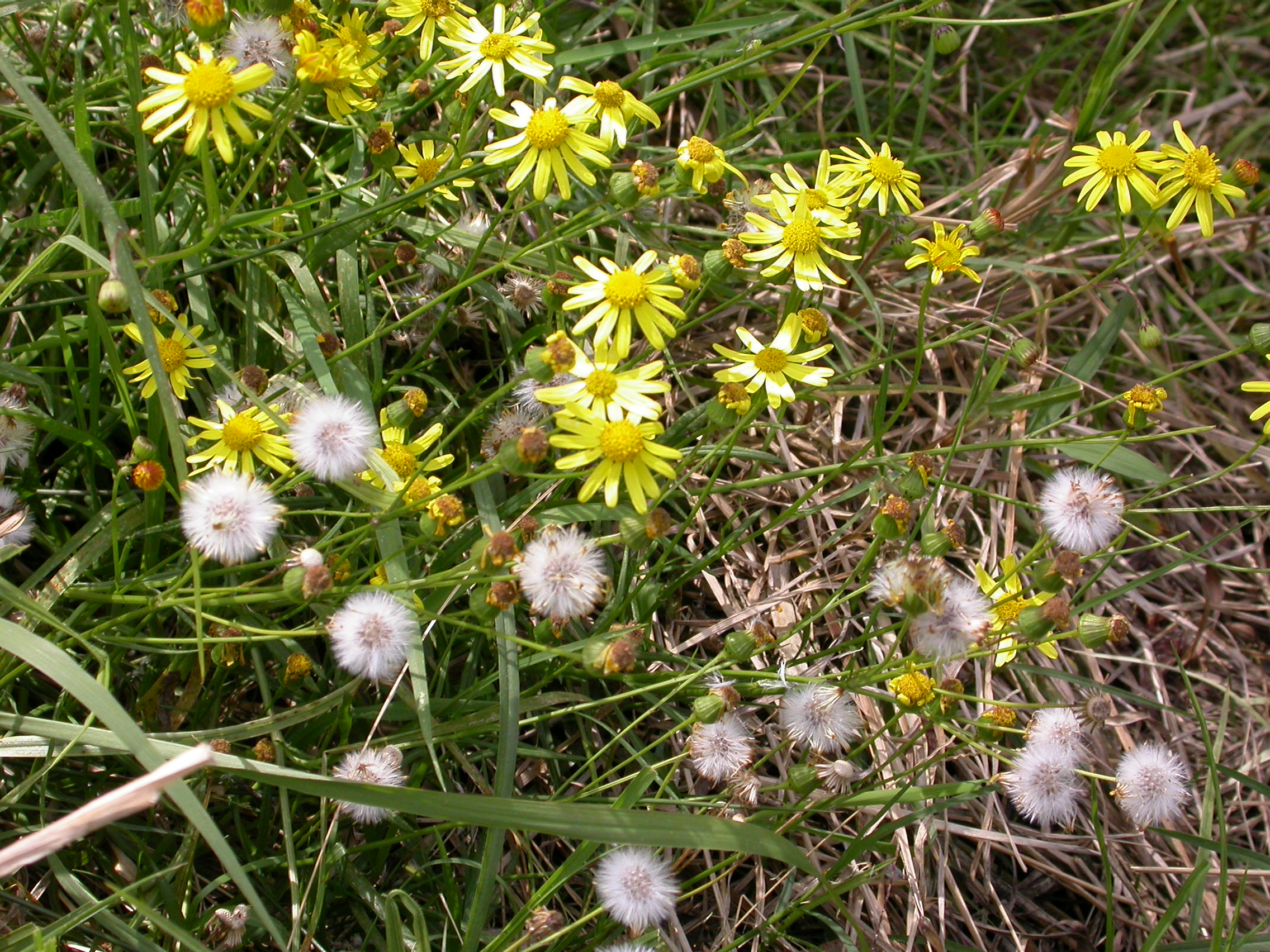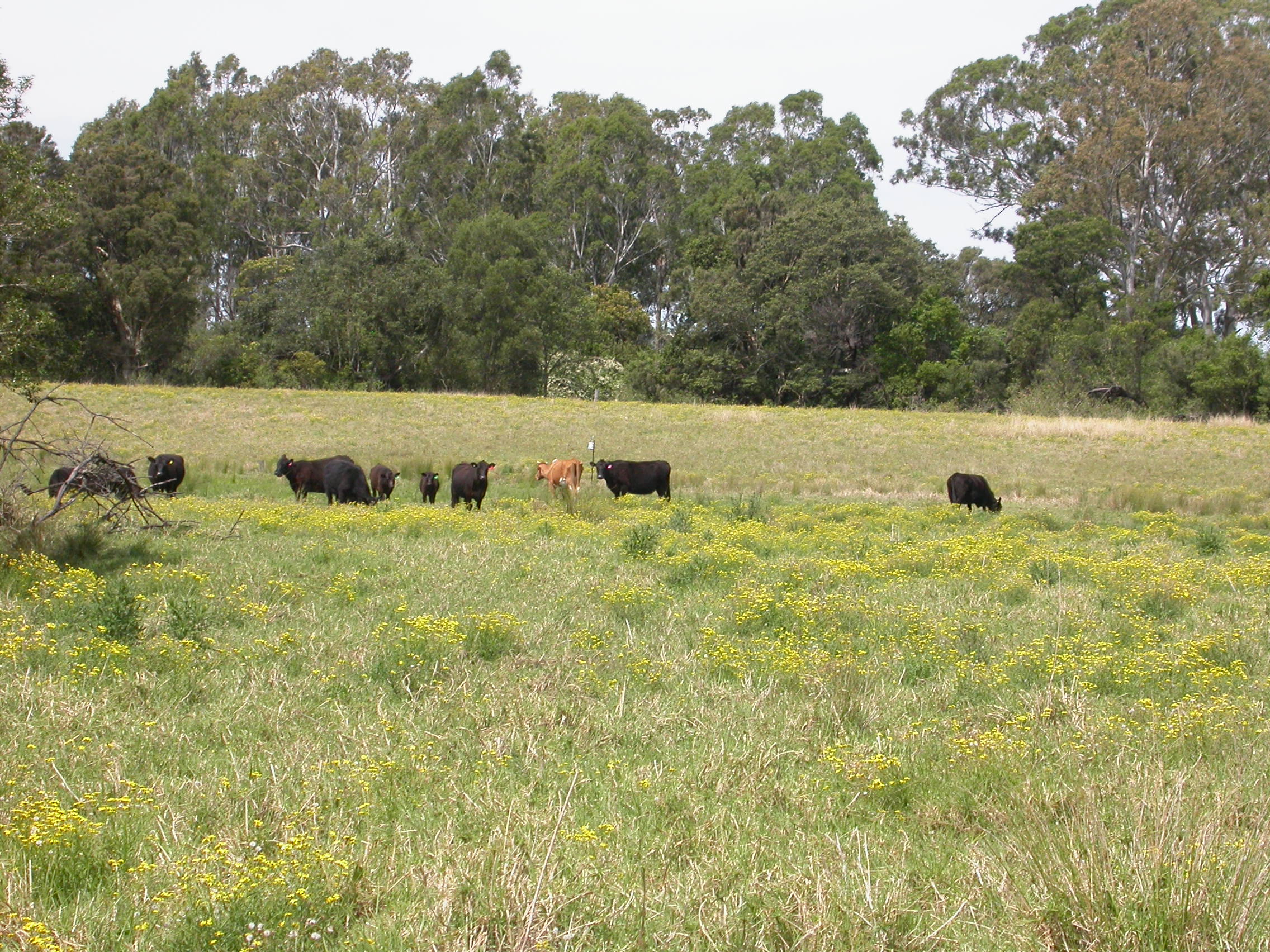Background and Resources
What is the weed problem?
Fireweed (Senecio madagascariensis) is a daisy native to southern Africa that has become a significant invasive plant of grazed pasture across south-eastern Australia. The plant contains toxic alkaloids that can cause liver damage to livestock and, as such, heavy infestations can cause significant reductions in stocking rates and productivity. The plant has dense soil seed banks and wind-dispersed seeds, meaning that it is capable of rapid spread over large distances.

Fireweed flowers that produce abundant, wind-borne seed.
How is the weed currently managed?
There are very few options for effectively managing fireweed in grazed pastures due to high rates of seed production, dense soil seed banks and long-distance dispersal capabilities. Herbicide application is unviable over large spatial scales and can be cost-inhibitive for many landholders. Chemical control costs alone are estimated to be nearly $20 million in NSW per year, but costs are likely to be higher when impacts on revenue from reduced stock productivity are considered.
The most effective form of management in areas not currently invaded by fireweed is early detection and spot-spraying straight after a rainfall event. Fireweed can set seed very quickly after germination, meaning that any delay in detection will rapidly lead to formation of a seed bank and uncontainable infestations in the long term.
Fireweed benefits from dry conditions that create bare spaces in pasture, and rainfall events promote germination of fireweed seeds into these bare spaces. Fireweed also benefits from high stock pressure by reducing grass cover and competition.
Pastures that have been long-invaded are difficult to manage due to high costs of herbicides, as well as dense fireweed seed banks that provide a constant source of seedlings for re-invasion. Populations can be suppressed by enhancing the competitive strength of desirable pasture grasses, mainly by rotational grazing between paddocks to keep grass biomass high and stock pressure low. Integrating grazing by sheep and goats alongside cattle may suppress fireweed as they are less susceptible than cattle and horses to the toxic alkaloids.
For more details on how fireweed is currently managed see:
- National best practice management guidelines for fireweed (2023): https://wildmatters.com.au/wp-content/uploads/2023/05/Fireweed-WEB-FINAL-4May23.pdf
- https://www.business.qld.gov.au/industries/farms-fishing-forestry/agriculture/land-management/health-pests-weeds-diseases/weeds-diseases/invasive-plants/restricted/fireweed
- https://www.dpi.nsw.gov.au/__data/assets/pdf_file/0007/49840/Fireweed.pdf
- https://www.une.edu.au/__data/assets/pdf_file/0004/52366/2012.-Fireweed-A-Best-Practice-Management-Guide-for-Australian-Landholders.pdf
- https://weeds.org.au/profiles/fireweed-madagascar-ragwort-madagascar-groundsel/#prosection4

Fireweed infestation of a grazing pasture at Wongawilli, NSW.
What can biocontrol offer to the weed’s management?
Biocontrol would aim to reunite fireweed with its coevolved ‘enemies’ (e.g., insect herbivores and/or pathogens) from its native range in southern Africa in order to reduce its growth and capacity for spread in Australia. Biocontrol may offer a sustainable contribution to the fireweed management ‘toolbox’ and may reduce the reliance on chemical control and improving carrying capacity of stock on invaded pastures. Biocontrol would not lead to the eradication of fireweed but rather reduce its competitive vigour against desirable pasture grasses and slow rates of spread by limiting seed output.
Research resources
Over the past 10 years (approx. 2012 to 2023), there have been significant advances in the biocontrol prospects for fireweed in Australia. Pivotal research has included broadscale and multi-year exploratory surveys of natural enemies across South Africa and prioritising a subset of promising candidate biocontrol agents for further risk analysis.
A list of key resources (including publication of all relevant data arising from field surveys and laboratory host-specificity testing) is provided below. If readers wish to be sent copies of each document, please contact project leader Dr Ben Gooden with a request via email (Ben.Gooden@csiro.au).
